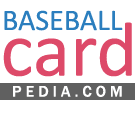For this class I've decided to do something I've always wanted to do and write a paper that's Hobby related. But there's just one problem.
Very few serious academic papers have been written on The Hobby, and what little that has been published is just laughable.
So, this is where you, especially those of you in "The Industry" who read this site, come in.
Before I continue, let me show you the proposal I sent in a few weeks ago.
ABSTRACT
On August 6, 2009, MLB Properties (MLBP), the licensing arm of Major League Baseball, granted Topps Chewing Gum a five-year exclusive-license for the production of baseball cards beginning with the 2010 baseball season; effectively giving Topps the monopoly-power it previously had from 1956-80. In 1981, Topps lost their monopoly after a competing firm sued and won an anti-trust case and was granted a license. After a decade-and-a-half of increased competition, which saw as one point as many as six different firms producing over 100 different MLB-licensed baseball card sets a year, “The Hobby,” as it became known, boomed. But after the boom came the inevitable “bursting of the bubble.” In the three decades since, through a series of mergers & acquisitions and liquidations, the number of firms producing officially-licensed baseball cards went from one, to three, to six; then four, two, and now back to one.
This paper will analyze “The Hobby” in the increasingly competitive boom years of the 80s and early-90s; the crash years of the mid-to-late-90s; the relative stability, despite the exit of some firms, of the mid-to-late-2000s; and the rationale behind MLBP’s decision to grant Topps monopoly power again.
Got all that? Good. Here's where I need your help.
Before they were bought-out by Pinnacle Brands, Action Packed conducted an annual "State of The Hobby" survey. Does anyone happen to have any copies of this survey lying around?
What was the name of the Federal case that broke up the Topps monopoly in 1981? I know Pete Williams' 1995 book Card Sharks discussed this case in great detail; unfortunately, my copy is lost somewhere at my parent's house in New Jersey.
What was the rationale behind MLB Properties decision to grant Score/Sportflics/Pinnacle Brands and Upper Deck licenses in the late-80s? I know Upper Deck had an "Ace in the Hole" named DeWyane Buice, but how did Score get theirs?
Finally, Stephen Strasburg notwithstanding, what have been the effects of Topps' exclusive license on the baseball card market in 2010, and beyond?
Again, let me state that THIS IS A SERIOUS ACADEMIC PROJECT THAT WILL BE GRADED. ANY ASSISTANCE YOU CAN LEND ME WOULD BE GREATLY APPRECIATED.
Thanks,
Chris Harris







7 comments:
First off, this looks like a really cool paper. I've done the whole Masters degree thing, complete with M.A. thesis, so I know what you're trying to pull off. Good luck! I can't really answer any of your specific questions, but as to your last one about the effects of the monopoly, here's one idea. I know Topps is notoriously stingy with releasing information, but I would be interested to see any shareholder reports from 2009 and 2010. Specifically, I would like to see if their sales increased in 2010. I'm guessing not; in fact I would guess that sales decreased, even with Strasburg--mania, because their monopoly brought a sense of boredom to the hobby. Obviously there won't be a 2010 annual report yet, but maybe you can find some Q1 and Q2 sales.
Fleer Corp. v. Topps Chewing Gum, Inc., 501 F.Supp. 485 (E.D. Pa. 1980).
Fleer Corp. v. Topps Chewing Gum, Inc., 658 F.2d 139 (3d Cir. 1981).
The case was originally brought out Eastern Pa - Area. If you have access to Lexis or can get to a law library these cases are fastinating reads.
Here is the appeal from 1981
http://ftp.resource.org/courts.gov/c/F2/658/658.F2d.139.html
Good idea for a topic. I don't know how detailed the annual reports are for Topps parent company, but they should contain information about the various subsidiaries.
In looking for research on Score I ran across a paper http://129.3.20.41/eps/io/papers/0505/0505004.pdf I had forgotten that Score was the same company as Sportflics (Optigraphics). The same author presented another paper on the topic to FSU. http://etd.lib.fsu.edu/theses/available/etd-08192004-172814/unrestricted/01_alz_dissertation.pdf
I may have found the survey.
http://www.highbeam.com/doc/1G1-16108220.html
If you want to borrow a copy of Card Sharks, I can put my copy in the mail for you to borrow.
I have a theory on the granting of licenses to Optigraphics and Upper Deck.
When the 2 companies presented their ideas to MLBP they were approved based on their uniqueness. Optigraphics was able to get their foot in the door with a "3-D" set that would be widely available in pack form. These types of cards were already available as a premium in Kellogs cereal, but this would be a set that would be more extensive.
Upper Deck was approved because it was a product that had an anti counterfeiting device (hologram) on each card. Counterfeiting was starting to become a really big deal in the late 80s and a company had a way to produce a set that would have a way for the average collector to determine if the card was "legit".
In short: licenses were granted because the two companies pitched an idea that was different than any other mainsteam product at the time and MLBP took a chance. Sportflics did well enough that the company was able to issue the Score set in 1988. If Optigraphics does not get granted a license for 1986 then we might not have had a Score set in 1988.
Again, this is just my theory.
Post a Comment